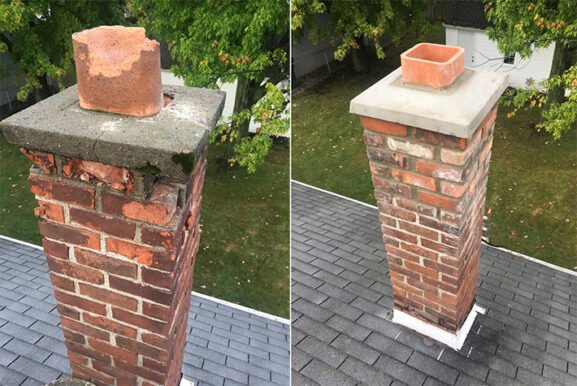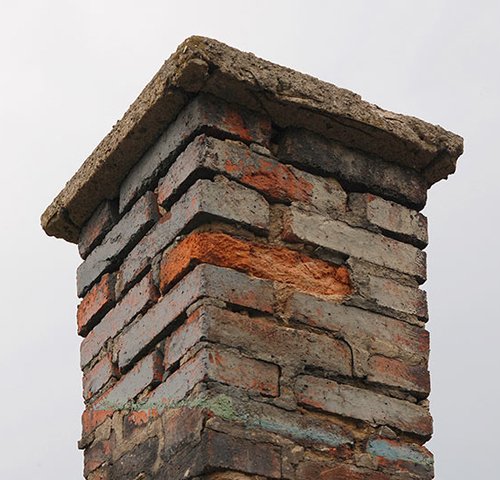Why Leaking Chimney Repair Should Never Be Delayed in Any Season
Key Takeaways
- Leaking chimneys can lead to extensive water damage in your attic, walls, and ceilings if left untreated.
- Causes range from cracked crowns and missing caps to deteriorating flashing and porous masonry.
- Repairing leaks promptly preserves the structural integrity of both the chimney and the home.
- Preventive maintenance and seasonal inspections are essential to avoid costly repairs down the line.
Understanding What Causes Chimney Leaks
A chimney leak may seem like a minor annoyance at first, but it often signals deeper underlying issues. Moisture from rain, snow, or condensation can infiltrate through small cracks or gaps in the chimney structure. Common causes include deteriorated mortar joints, cracked chimney crowns, missing or damaged caps, and faulty flashing around the chimney base.
Brick and mortar are both porous materials. Over time, exposure to the elements can allow water to penetrate through them, especially in climates where freeze-thaw cycles are common. When water gets into small crevices, it can freeze, expand, and cause further cracking — a condition that steadily worsens without repair.
How a Leaky Chimney Affects the Whole Home
Water intrusion is more than just a cosmetic problem. If a chimney leak goes unresolved, the damage can spread well beyond the fireplace. Moisture can seep into your attic insulation, stain ceilings and drywall, rot wood framing, and even lead to mold growth.
This kind of hidden water damage can be costly to repair, especially once it begins affecting the roof structure or interior walls. According to the National Fire Protection Association, regular chimney inspections can reduce the risk of fire hazards and water damage significantly. When ignored, chimney leaks may even reduce the lifespan of the chimney system itself, accelerating brick decay and compromising structural safety.
Common Signs Your Chimney May Be Leaking
Recognizing the early signs of chimney leaks can save homeowners thousands in repairs. Some of the most visible red flags include:
- Water stains on ceilings or walls near the chimney
- A musty smell inside the fireplace
- White staining or efflorescence on chimney bricks
- Rusting fireplace components, such as the damper or firebox
- Mold growth or deteriorated plaster near the chimney breast
Homeowners often overlook these signs, assuming the damage is roof-related. But in many cases, it’s the chimney system that’s the true source.
Solutions for Leaking Chimneys Based on the Cause
The correct repair approach depends on the cause of the leak. A professional inspection helps pinpoint the problem and determine what solution fits best.
Chimney crown repair or replacement is often necessary if the top layer of the chimney has cracked. This concrete slab is designed to shed water, and once it fails, water will easily enter the flue and masonry below.
Chimney flashing repair addresses leaks where the chimney meets the roof. Flashing acts as a seal to prevent rainwater from entering. When it pulls away or corrodes, water intrusion is almost inevitable.
Waterproofing the chimney is another effective strategy. This involves applying a breathable water repellent that allows moisture to escape from within while preventing new water from entering.
Installing or replacing a chimney cap is one of the simplest but most important upgrades. Chimney caps keep rain, debris, and animals out of the flue. Without one, your chimney is exposed directly to the elements.
The Risks of Delaying Chimney Leak Repairs
Putting off chimney repairs often leads to a snowball effect. A small leak might only require sealing or caulking at first. But as water continues to seep in, the damage grows — eventually requiring structural repairs or even a complete chimney rebuild.
Delaying repairs can also increase heating inefficiencies. A compromised chimney allows cold air and moisture into your home, forcing your HVAC system to work harder. This not only drives up energy bills but also compromises indoor air quality.
The financial cost of waiting can far exceed the price of a minor repair. Early intervention is always the smarter, more economical choice.
When to Schedule a Chimney Leak Inspection
The best time to schedule a chimney inspection is before the heavy rains of spring or the snowstorms of winter begin. Seasonal changes place added stress on chimney components, especially in regions with harsh freeze-thaw conditions.
Ideally, homeowners should have their chimneys inspected once a year. This routine check helps identify wear and tear early on and allows for small fixes before they evolve into major issues. Chimney technicians can use moisture meters, smoke tests, and video scanning tools to assess even hidden damage.
Maintenance Tips That Prevent Chimney Leaks
Preventive maintenance plays a huge role in keeping chimney leaks at bay. Here are practical steps to extend the life of your chimney system:
- Always ensure your chimney has a properly fitted cap
- Schedule annual inspections by a certified chimney technician
- Seal visible cracks or gaps before winter sets in
- Keep gutters clear so rainwater doesn’t pool around the chimney base
- Consider waterproofing treatments every 5 to 10 years
Simple upkeep like this helps protect your chimney from New York’s nor’easters or New Jersey’s coastal rains. It also helps safeguard your entire home from water-related destruction.
How Professionals Fix Leaking Chimneys Safely
Professional chimney repair technicians follow industry-standard practices to ensure repairs last. Most reputable companies use scaffolding or roof access systems for safety and bring in specialized tools to assess the extent of water damage.
Techs often begin with a full moisture assessment and thermal imaging, followed by targeted repairs like crown patching, brick replacement, or flashing reinstallation. For older chimneys with chronic leaks, they may recommend partial reconstruction to restore structural integrity.
Hiring a qualified, experienced team is essential. It ensures that repairs are performed correctly and minimizes the chances of the issue returning within a season.
Protecting Your Chimney Investment for the Long Term
Leaking chimneys may start with minor warning signs, but their impact can quickly grow if left unattended. Whether it’s the mortar eroding between bricks or moisture eating away at the flue lining, addressing leaks early is key to maintaining your home’s safety and value.
Chimneys are not just architectural features — they’re systems that support ventilation, heating, and fire safety. A small repair today can prevent major damage tomorrow, saving both time and money. Regular upkeep, expert evaluations, and timely repairs go a long way in ensuring your chimney performs as it should year-round.

